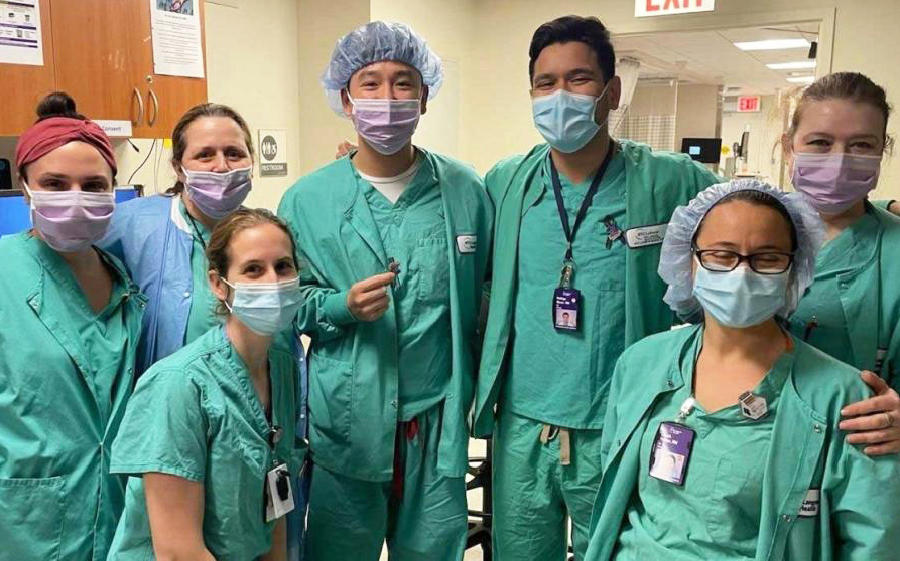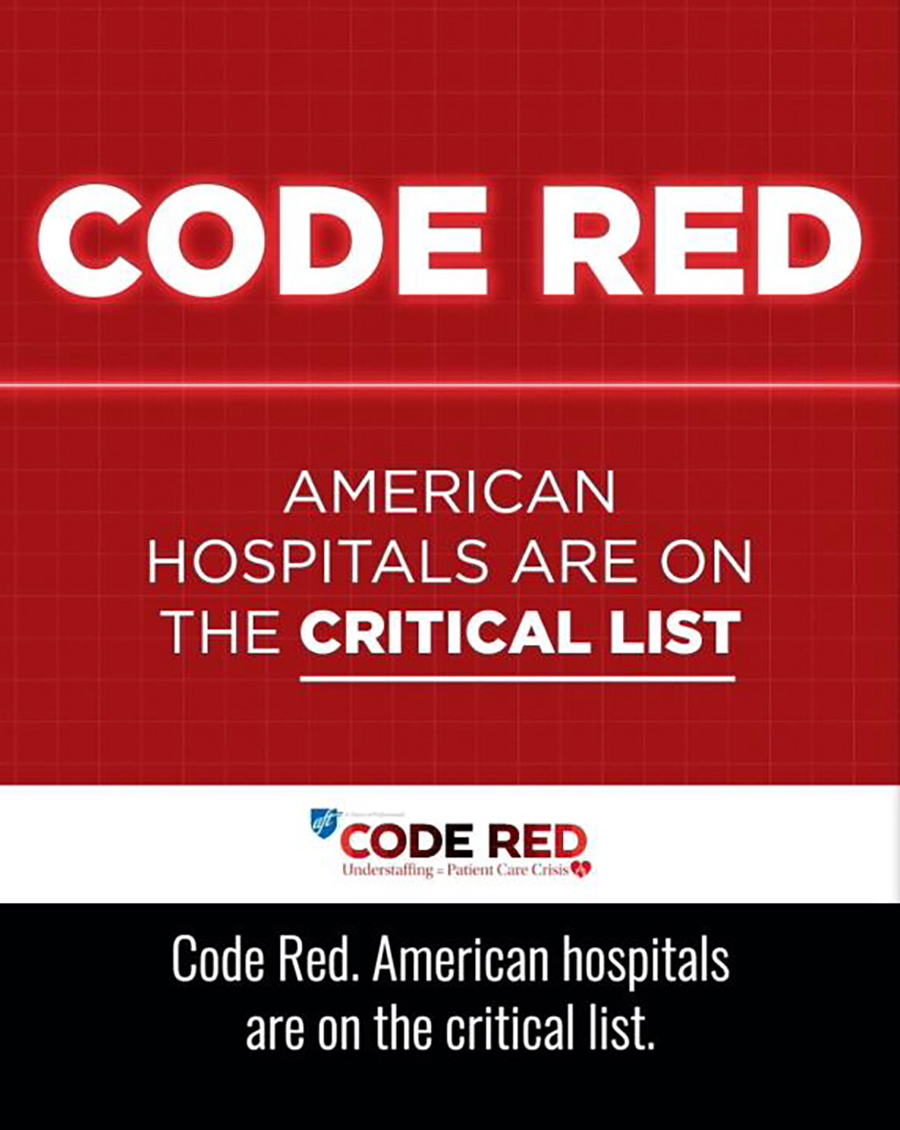Give nurses what they need
ay marked National Nurses Appreciation Month, but nurses across the state say it is going to take a lot more than “Thank You’s” to set things right in their profession. Instead of feel-good pablum, they want action.
“During COVID we were stars. Everybody was banging pots and pans and saying ‘Bravo, nurses!’“recalls United Federation of Teachers Vice President Anne Goldman, head of the Federation of Nurses/UFT. “And we said, ‘Great, you finally get it. You see our heroism and commitment.’” But that recognition was short-lived, Goldman said, and today’s nurses are worse off than ever.
According to the AFT’s “Healthcare Staffing Shortage Task Force Report,” one in five health care clinicians have quit their jobs since the beginning of the pandemic. Of those who stayed in their jobs, nearly one in three have considered leaving at one point. And between 2020 and 2021, the total number of registered nurses in the workforce declined for the first time in more than five years.
To put the short staffing issue front-and-center for consumers and legislators, this year AFT launched a $1 million multifaceted, multiyear campaign, “Code Red: Understaffing = Patient Care Crisis.”
Code Red is a response from AFT and health care affiliates around the country to secure safe patient limits and other crucial protections to improve quality of care. Learn more at aft.org/codered.

Short staffing leads to higher rates of infection and medical errors as well as higher morbidity and mortality rates, Nin said.
Nurses also want laws on the books that require safe staffing levels. Few states set staffing levels.

In the meantime, the UFT has worked hard to help nurses at NYU Langone Hospital–Brooklyn get safe staffing ratios included in their labor contract, and they have held the hospital accountable for violations. In the past year alone, nurses at NYU Langone Hospital–Brooklyn filed 900 staff-related grievances against the hospital with UFT’s help, showing that staffing standards set in the contract were ignored.
The goal of the grievances is to deter the hospital from short staffing, Nin said. Once filed, grievances are taken to arbitration — an expensive undertaking for the hospital. “With UFT, we’ve weaponized the grievance machinery and the contract in a way that no one else in the city has done for the express purpose of enforcing nurse-to-patient ratios, and we’ve done it for patient safety,” said Goldman.
Data show that adding just one additional patient to a nurse’s workload results in a 7 percent increased risk of a patient dying within 30 days of admission. For children, understaffing increases their risk of being readmitted to the hospital after treatment.
Shorter hospital stays, spurred by a hospital’s desire to turn beds over quickly, can also compromise patient safety and increase the odds of a patient being readmitted.
Understaffing also contributes to burnout and worker dissatisfaction, which fuels more turnover and only exacerbates shortages.
“We’ve hired 22 nurses in the past year, and more than 22 have left,” said Gina Scudiero, RN at NYU Langone Hospital–Brooklyn, UFT. “They don’t stay. The experienced nurses are now leaving because they’re finding jobs that don’t have this kind of pressure, and the new nurses that come on find they don’t have the support they need, and they leave, too.”
Maria Paradiso, RN at NYU Langone Hospital–Brooklyn agrees. “You want to give your all and you want to do your best, but no matter what you do, something is preventing you from making that happen for your patient,” said Paradiso, UFT. “It’s heartbreaking.”
Scudiero has begun conducting weekend meetings with fellow UFT members via Zoom. Part pep talk, part training, and part forum, these casual Sunday sessions have become a unit staple and a practical way for nurses to get their needs met.